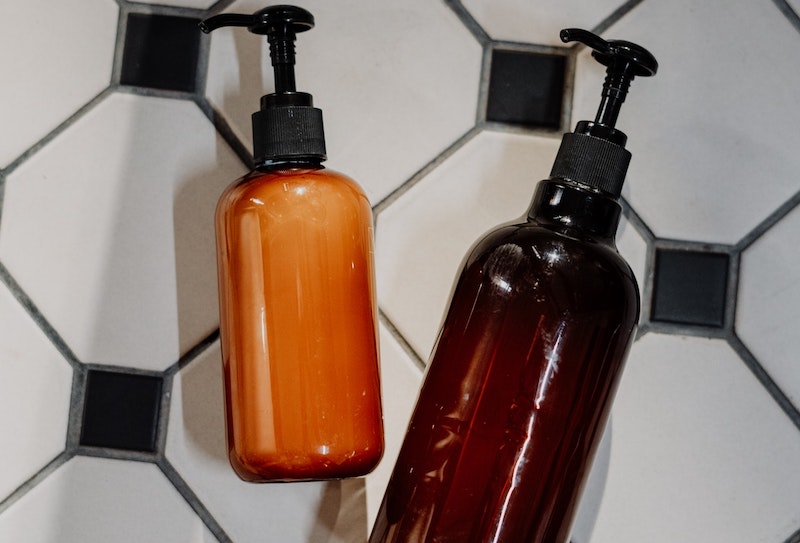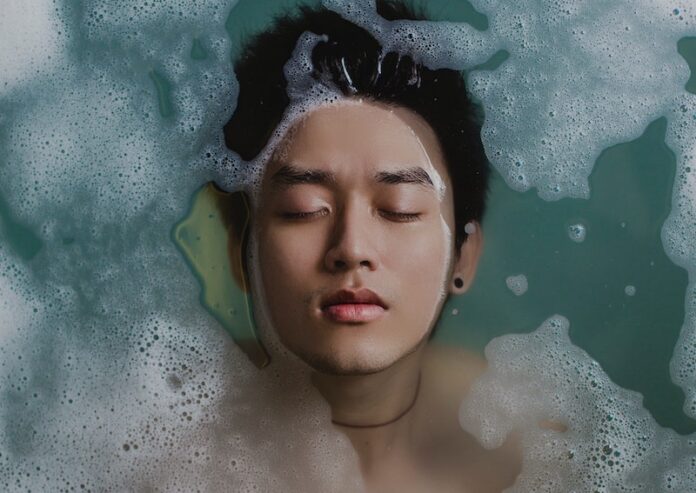Shampoos had been around since the 1800s, but it was more of a prototype than our shampoos today. Sheikh Din Muhammad was an Indian entrepreneur that traveled to England together with his wife, Jane, and introduced the commercialized “champooi,” or now referred to as “shampooing” (read more). Since then, the evolution of commercialized shampoos evolved from shaved soap with added herbs for the fragrance to gel-based bubbly products today.
But that does not end there. The evolution led us to the invention of “dry shampoo,” and it made a stir to consumers. Nowadays, it is widely known and used by hairstylists and consumers alike. It is commercialized as a shampoo that does need any water to exploit its potential.
Now you may wonder, is regular shampoo better than a dry one? What is the difference between the two? Which one works effectively in taking care of your hair? Well, keep reading as we compare both products in this brief review!
What Is Regular Shampoo?
It is a hair care product that works when your locks and scalp are wet. It is spread on your locks and scalp, forming foams and bubbles, and then gets rinsed out by water. The typical use of the product is to remove any grease from your hair and scalp. Other products have specific benefits like removing dandruff or adding vitamins for your hair to strengthen it.
Using the regular product is aesthetically pleasing, especially when massaging your scalp with it. Rubbing your hair to make foams as well, thanks to the components of the product that allows us to enjoy the pleasure. There are specific components that improve these qualities and use too, like:
- Foam formation
- Fragrance
- Hair repair
- The creamy feel of the viscous fluid
- The ease of rinsing the fluid
- Slight acidity
- Less toxic to your body and hair; and
- Good biodegradability
What Is Dry Shampoo?
This one is a hair care product that works similarly with regular products, except for different components. The product is in powdered form and used as an aerosol on your locks. Some named it “Shampoo-in-a-can” since it is literally in a can. It is based on starch powders and is widely used by hairstylists.
It’s Comparing Time!
1. Usage
Using the regular product is much simpler than the dry one. There are some instructions on how to use dry shampoo on the internet as it may be complicated for some new users. Regular shampoos are used by making your locks and scalp wet, then apply the product, spread it on the hair and scalp, massage, then rinse. Hairstylists widely use dry shampoos due to their components that keep bobby pins in place and teases your hair, making it easier to style them.
2. Side-Effects
Dry shampoos have more side-effects than regular ones. Only a few side effects are similar to each other, like eye irritation upon contact and skin irritation. Some of its side effects include:
- Hair loss from inflamed hair follicles
- Dermatitis
- Allergic reaction from the components
- Hormonal disruption from preservatives
- Nausea feeling from liquefied petroleum gas
Dry shampoos are relatively dangerous when near sources of fire, like ovens. The components include some combustible like butane and isobutane. It is best to keep it away from the kitchen, fireplace, and from the sun’s heat.
3. Benefits
The dry shampoos work more conveniently than the regular ones. You can use it whenever you want without having to take a bath. It reduces your hair’s grease and helps maintain the dye of your locks if you have some. But unlike dry products, regular ones have more versatility when it comes to usage. Standard products have “specialized shampoos” that have specific functions.

Specialized shampoos include:
- Dandruff Remover
It helps remove dandruff and itchiness caused by it, widely used for those who are always prone to dandruff formation, like workers who get stressed at work. Other examples are those who are exposed to the sun for an extended period.
- Sulfate-Free
The surfactant used in cosmetics that causes itchiness or skin irritation is called sodium lauryl sulfate. The surfactant does not do any damage to your locks. If you are sensitive to surfactant, it is better off to use this specialized product.
- Colored Hair
Explicitly designed for dyed hairs, the specialized product is a must-have for those who invest in their new look. It reduces the damage to your locks caused by the bleach or dye. Additionally, it also maintains the color of the dye.
- Solid
Yes, solid, in the form of soap. The hair care product was initially modified from shaving soaps and mixed in with herbs for fragrance. It will not be weird to use a soap form, and in some cases, it could also be used for other hairs on our body, like facial hair.
- Antibacterial
It is a shampoo infused with antibacterial components, usually used in the hospital before surgery. It is used in veterinary medicine as well. The primary purpose of this type is to kill bacteria and prevent their growth.
Despite not being versatile, dry hair care products can be made at home. Since it is starch-based and purchasable at grocery stores, you can use it to create one at home following Do-It-Yourself instructions you can search over the internet. There are other types of dry shampoo as well.
- Herbal Powder
It is a form of dry wash hair care product that uses herbs. This is generally a much healthier option as it has fewer side effects.
- Clay
There have been uses of clay formed dry shampoos in history. Originally from Morocco, it has a high absorption to the locks’ greases (link: https://softerhair.com/the-benefits-of-clay-based-shampoos/). It can also be a remedy for dandruff!
In Conclusion
The use of dry shampoos should never replace regular products. Dry products should only be used occasionally as it has many side effects, causing more harm to you in prolonged usage. Additionally, due to its volatile components, it should not be used as a flame starter. However, if you decide to buy or make the product, it is always a plus to know a thing or two about it, so consider having some more research about it!

